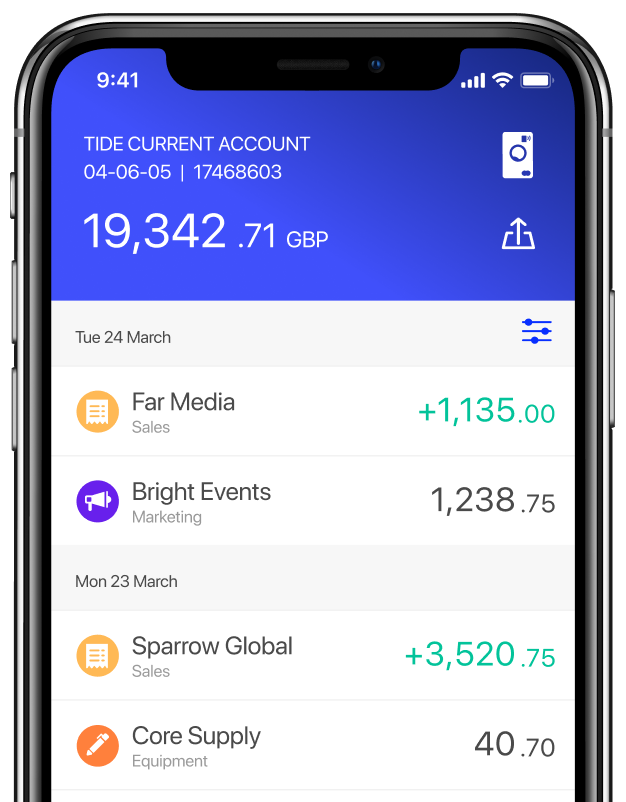
Purchase scam in action – Learn the lessons of this business owner

Purchase scams are an ongoing threat to business owners across the country.
At their heart they are very simple, but can be devastatingly effective.
You see something you want to purchase, send the seller your money, and you never receive what you paid for. It sounds easy to avoid, but that’s exactly why they’re so dangerous.
Discover the underlying tactics of this scam by reading this business owner’s real life experience, which could have gone very differently if he knew just a handful of our safety tips.
The background
John, the owner of “BuildStrong Construction”, has been running his construction company successfully for over a decade. He regularly buys tools and equipment to maintain the quality of his services. One day, while browsing an online marketplace, he came across an offer that seemed too good to pass up.
Scam Step 1: The offer
John noticed a listing for high-end construction tools, including drills, saws, and other essential equipment, at a significantly reduced price. The seller, who claimed to be liquidating assets due to closing his business, appeared legitimate with a well-written description and multiple photos of the tools.
Scam Step 2: Initial contact
Excited by the prospect of upgrading his equipment at a fraction of the cost, John contacted the seller. The seller, ‘Mike’, responded promptly and provided further convincing information about the tools, including specific details about their use, condition and make.
Scam Step 3: Building trust
Mike was very accommodating and answered all of John’s questions thoroughly. He even provided a contact number for further discussion. During their WhatsApp conversation, Mike seemed professional, knowledgeable about the tools, and genuinely emotional about his company’s ‘liquidation’. All of these elements reinforced John’s belief in the legitimacy of the offer.
Scam Step 4: Arranging payment
John offered to pay by card, but Mike insisted on a direct bank transfer, citing previous issues with payment platforms and emphasising the urgency of the sale. Trusting Mike’s story and eager to finalise the deal, John agreed to the bank transfer, sending £3,000 to the account details he’d been given.
Scam Step 5: The sting
After making the payment, John eagerly awaited confirmation that the goods had been shipped. However, days passed with no update from Mike. When John attempted to contact him, Mike’s phone number was disconnected, and his Facebook profile had been deleted. Realising he’d been scammed, John was left without the tools and out £3,000.
John reported the incident to us and the company who runs the marketplace, but it wasn’t possible to recover his money – in this case because he’d paid by direct bank transfer.
5 lessons learned
After the experience, John learnt the importance of these key tips to avoid this scam in the future:
- John allowed the excitement of securing a great deal to override his better judgement. Scammers will often use eye-catching discounts to maximise your excitement, making you want to believe it, even if you have your doubts.
Remember: If it seems too good to be true, it probably is.
- John didn’t consider how much work scammers will put in to get to your money. Researching the tools in detail, taking the time to answer all questions, and appearing genuinely emotional while explaining his carefully created reason for the discount. Successful scammers have made a business out of using sophisticated tactics to convince you, and shouldn’t be underestimated.
Remember: Check that a seller is genuine by researching their social media profiles, online presence, and verifiable reviews.
- John paid by direct bank transfer, which should only ever be used if you’re 100% sure you know who you’re paying and what you’re getting.
Remember: If a seller insists on only using direct bank transfer, do not pay them unless you have seen the goods yourself.
- John wanted to pay by card, but was convinced otherwise. With card payments, you can often get your money back via a ‘chargeback request’, which forces the seller to prove that they provided what you paid for. Learn more about how to stay safe from purchase scams.
Remember: Where possible, always use card payments when making purchases.
- John made the payment before seeing the goods. He also didn’t ask for any confirmation of delivery details to check whether the delivery service was legitimate.
Remember: If possible, always view the goods in person. If you can’t, ask for and check the delivery confirmation details before paying.
Purchase scams are one of the biggest fraud types in the UK, especially during the holiday periods over summer and winter.
Event tickets, flight tickets, and holiday rentals in the summer, and in-demand products like the latest gaming console during Christmas, can all be high-risk purchases if you’re not prepared.
With these 5 lessons, you can keep your money protected and avoid falling foul of this scam completely.
Please note that this story is a fictionalised account inspired by real events reported by our members. Names, characters, and certain details have been altered to protect members’ privacy. It is intended solely for educational purposes to enhance awareness about purchase scams. Any resemblance to actual persons or events is coincidental.
Photo by Jeremy Perkins, published on Unsplash




